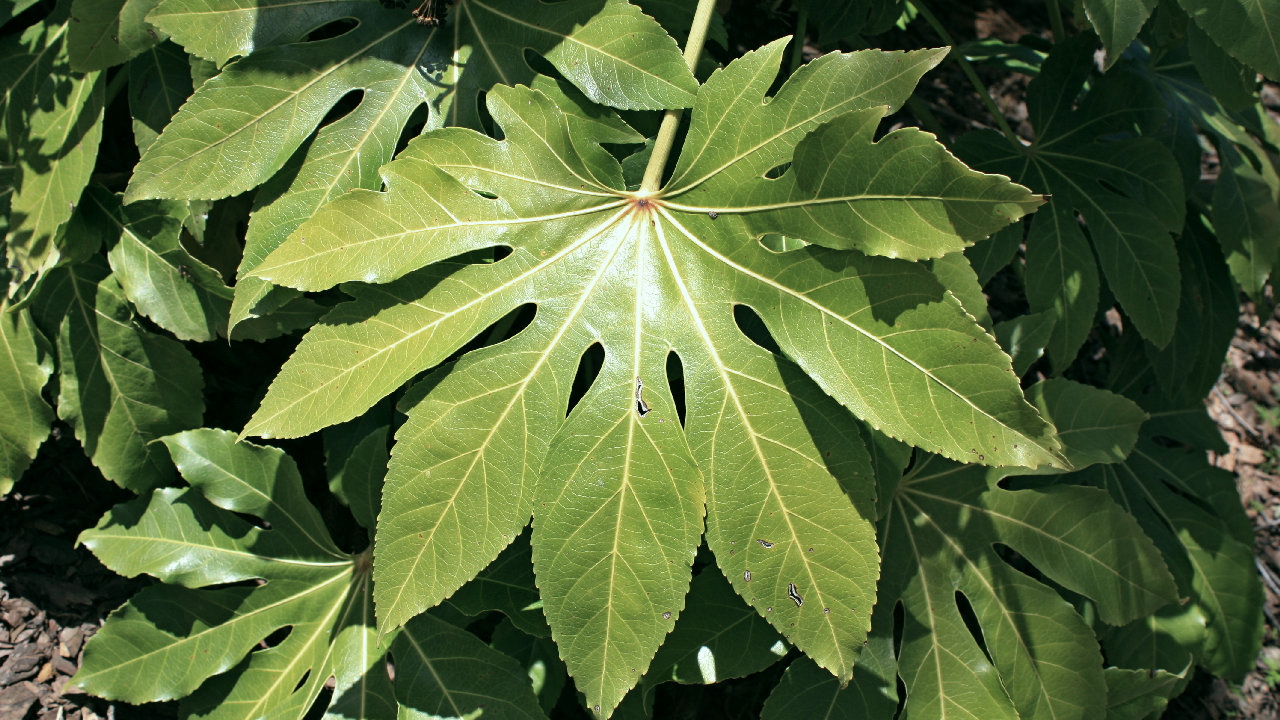🌿 Araliaceae – The Ivy and Ginseng Family
Japanese Aralia – Fatsia japonica
Fatsia japonica is a shade-tolerant evergreen shrub native to southern Japan and South Korea. It features large, glossy, palmate leaves that can reach up to 30 cm in diameter, providing a bold foliage display. In autumn, it produces clusters of small, white flowers arranged in umbels, followed by black berries. Due to its adaptability and striking appearance, Fatsia japonica is widely cultivated as an ornamental plant in temperate regions.
The Araliaceae family contains ~ 70 genera and over 1,200 species of flowering plants, including trees, shrubs, lianas, and some herbaceous forms. Members are predominantly found in tropical and subtropical regions, with some extending into temperate zones.
Characteristic features include large, often compound leaves; small, five-parted flowers arranged in umbels; and fruits that are typically berries or drupes. Notable genera within this family include Hedera (ivies), Panax (ginseng), Schefflera (umbrella trees), and Fatsia (Japanese aralias). Several species hold economic and cultural significance, serving roles in traditional medicine, horticulture, and as ornamental plants
Castor-Aralia – Kalopanax pictus
Kalopanax pictus, commonly known as Castor Aralia, is a deciduous tree native to East Asia, including China, Korea, and Japan. It can grow up to 30 meters tall and is distinguished by its large, palmate leaves with seven lobes and stout branches often armed with prickles. In late summer, it produces umbels of small white flowers, which give way to black drupes. The tree’s unique appearance and adaptability make it a subject of interest for both ornamental planting and botanical studies.
Birch | Oak | Walnut | Fruit Trees | Nut Trees

